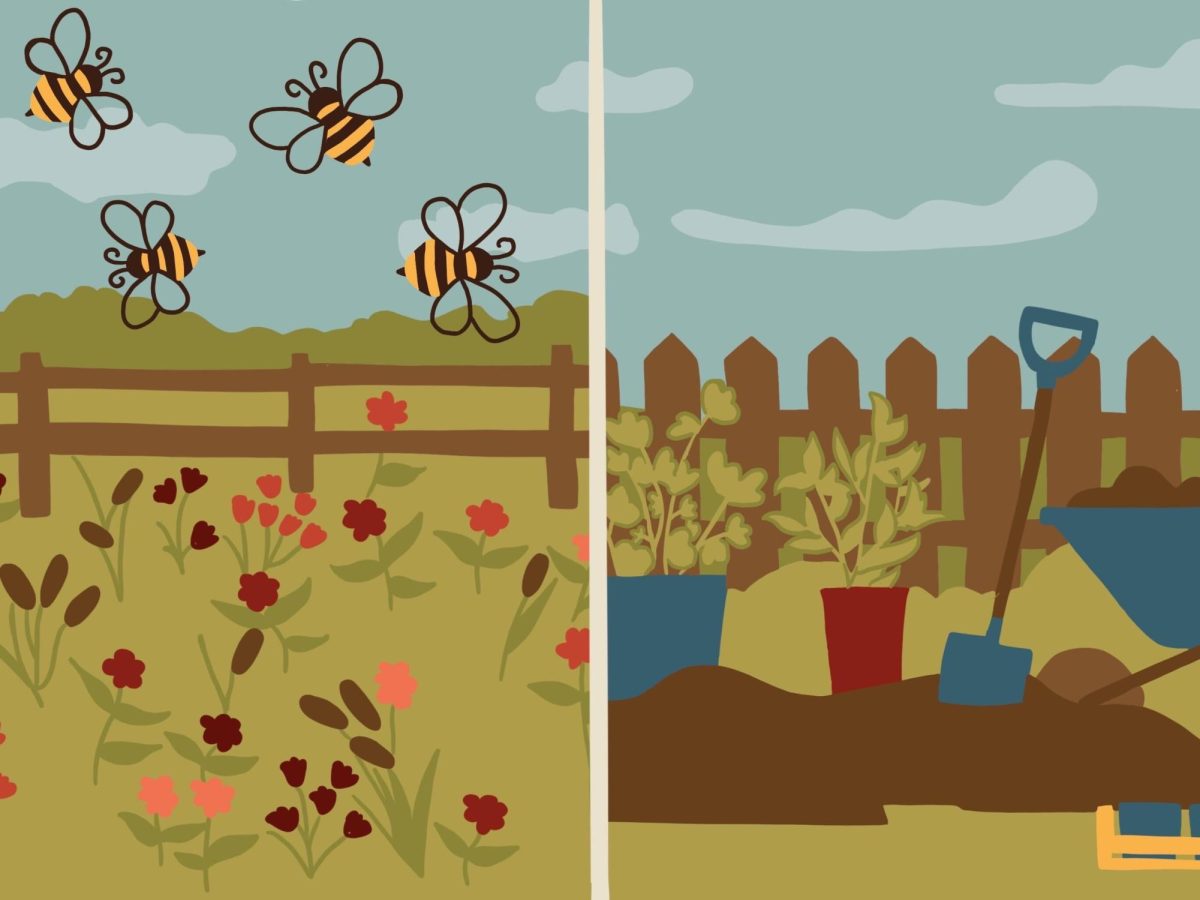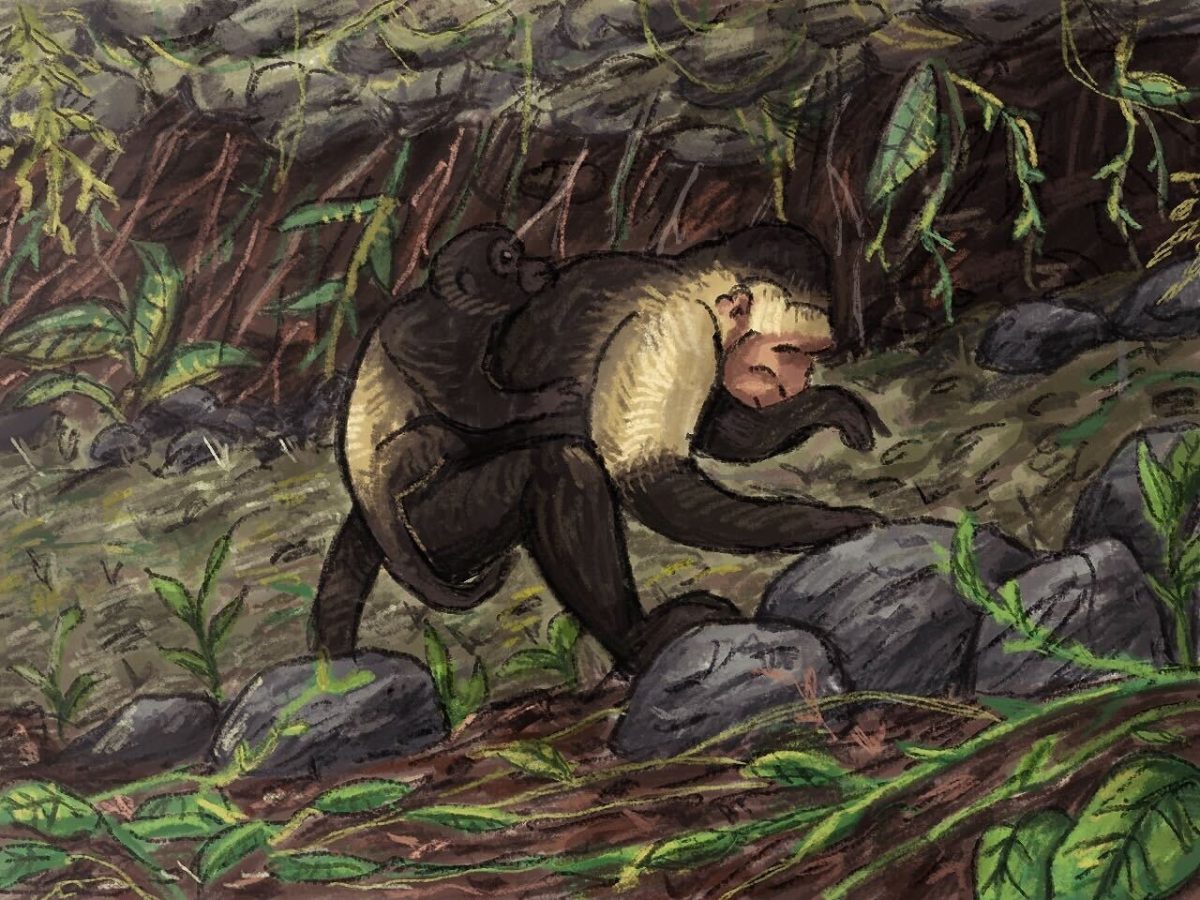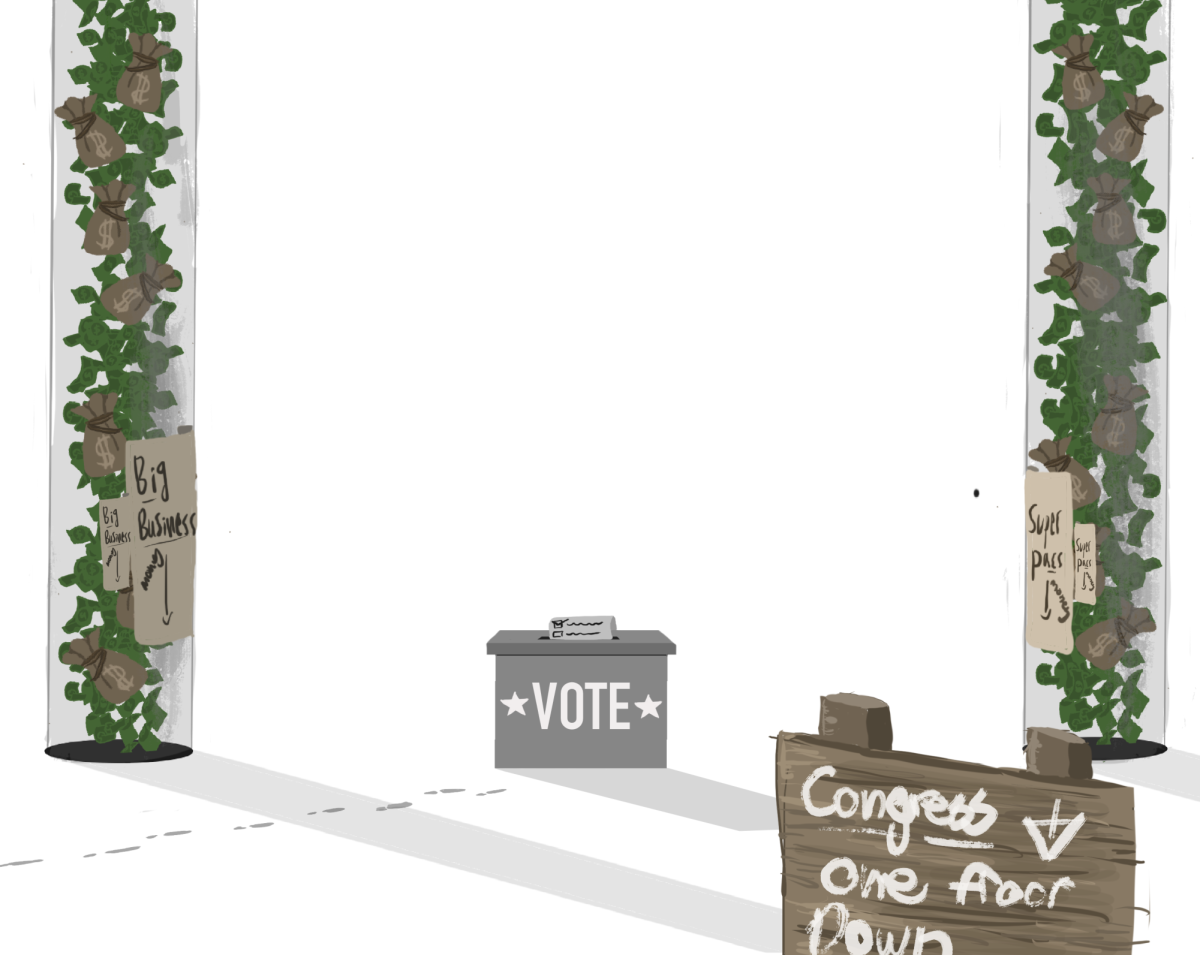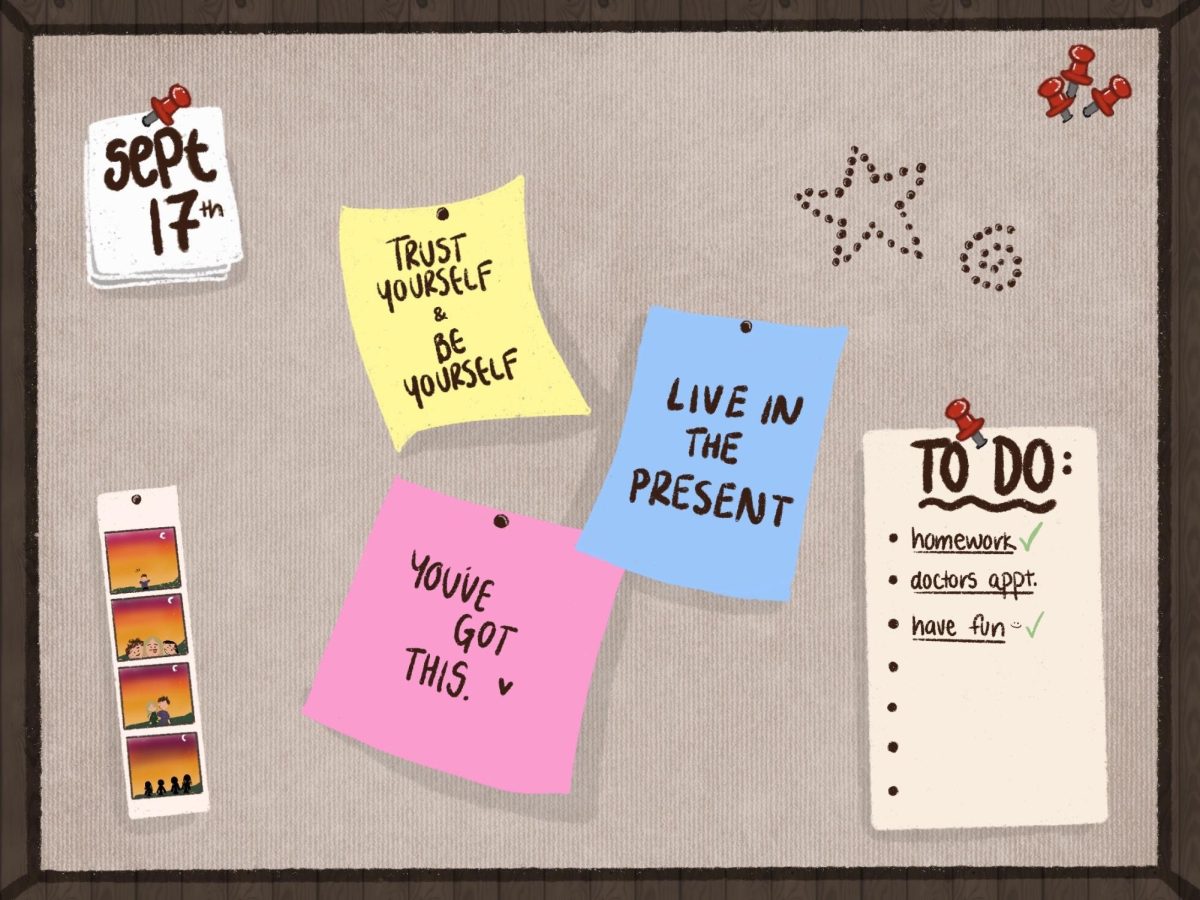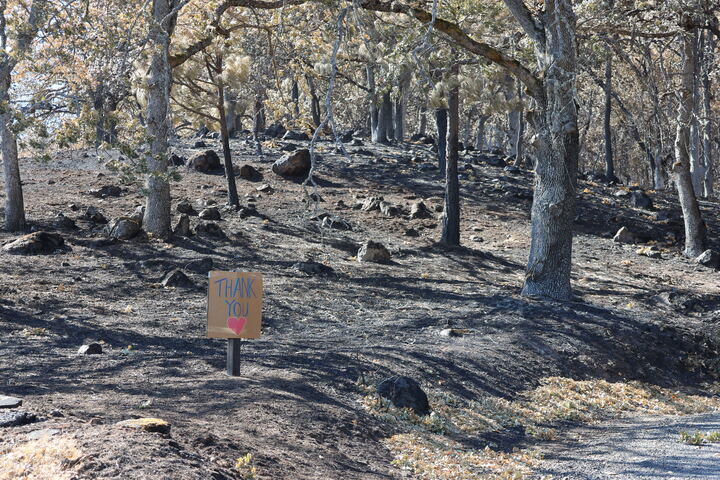I always wondered why so many honey and bumble bees flocked to the blue blossom bush in my backyard. I assumed it was the bright color and fun shape of the petals, but in actuality it was something else entirely.
The reason why the bees swarmed, and will continue to swarm the bush like it’s their last day buzzing, is because it is a native plant in Oregon. The bush attracted them more than any other flower planted, and it bloomed right on schedule for the bees leaving their hives at the start of spring.
Native plants captivate pollinators and draw in wildlife.
Unfortunately, the prevalence of native plants in Oregon lawns is frustratingly low. Instead of embracing the plants meant to thrive in our beautiful Oregon soil and supporting the ecosystem as a whole, we are tearing up life and ripping habitats out of the hands of the already suffering pollinators.
Perhaps the most common spot for these non-native plants is right in front of our houses: the lawn.
Oregon lawns primarily use ryegrass and fine fescue grass, with flowerbeds enjoying a plethora of exotic, non-native plants and flowers. As beautiful as it may seem, there is a dark problem growing underneath.
According to Green America, “Over 80% of Americans have lawns,” but it was not always this way. They started to be admired in the late 19th century as it was presented as an important part of the American dream. The idea of having a clean green lawn and white picket fence grew its popularity and became a sign of success and prosperity.
In reality, the sleek and aesthetically beautiful lawns we cherish are really an ever-growing invasive species. Historically, the most common grass used in lawns were originally imported to support and sustain our cattle, but it has spread to our homes and has had a significant negative effect on the environment.
A way to combat this is by having more biodiverse plantlife. Biodiversity is every form of life in a certain region, which means plants, animals, fungi, and microorganisms. Within plant life, it is the variation of genetic differences among vegetation that makes an area biodiverse.
The first critical issue is the outrageous amount of water being used in Oregon to sustain lawns. According to Oregon State University, “during the summer, nearly half of all residential water in Oregon is used to irrigate landscaped areas around homes.” This is simply unacceptable. These supposedly ideal lawns and other plant life are overindulging in higher and higher amounts of our planet’s limited freshwater — millions of gallons of clean and expensive water.
In comparison, native plantlife needs far less water to stay alive because they have evolved and adapted to best survive in specific soil composition and environmental factors. Embracing and supporting native plant biodiversity can help prevent the irresponsible use of water.
Not only do these non-native plants need an outrageous amount of water, they often need pesticides to stay alive and healthy. While pesticides can be good for keeping crops protected and disposing of any invasive pests, you do not need that for your everyday lawn. The irresponsible use of pesticides may seem like a simple and helpful tool for keeping plants alive; however, the precious pollinators are frequently caught in the crossfire.
Bees have a pollinating season, the time where it’s finally becoming warm enough for them to leave their hives and start collecting pollen. Unfortunately, toxic pesticides can contaminate nearby water sources and pollen in flowers. This means that when bees are retrieving the pollen they may end up bringing back deadly chemicals that will eventually kill off the hive. Not only this, but if bees stop to get a quick sip of water, any amount of pesticide contamination can kill a bee almost instantly.
Aside from the imprudent water and pesticide usage, by phasing out native plants we have disrupted and displaced our vital pollinators.
The U.S. has been in a state of devastating urban development. Trees have been cut down and plants have been uprooted, and are replaced by negative non-native plants. While it isn’t realistic to expect an individual to stop all harmful development, it is completely understandable to request people to consider making small changes at home.
The grass we are using in our lawns does not provide a healthy habitat for any insect or native species. The grass we often use looks polished and posh for us humans, but in reality, it’s pushing out nature.
The flowers being planted currently may bloom too early or too late, which can leave breaches in pollinators’ supply of food, such as pollen and nectar. This leaves many bees and butterflies hungry.
It is time to replace our delicate, manicured lawns and reintroduce infinitely better alternatives. Plants that can and will support the habitats of pollinators: plants that will not sponge up water or drain soil of its natural resources.
Some native, drought resistant, alternative lawns that promote biodiversity are Mood Moss, Oregon beaked moss, Owyhee clover, and White clover. If you want to steer further away from the classic lawn, wildflower meadows, ornamental and native grasses, and Xeriscape lawns would be a colorful and unique substitute.
It is understandable to see these propositions and not have a desire for biodiverse lawns, as many are perfectly satisfied with their foreign flowers and grass lawns. Not to mention, uprooting your lawn can be an annoying and timely process. But, for the sake of your wallet, the planet’s water, and the pollinators, it’s an investment that should be made.
In order to prevent the further extermination of our pollinating friends we need to move on from non-native and exotic plants. These plants need excess support to stay alive and will drain not only your resources but that of the planet, and your lawns of natural life.
Pollinators are already deeply harmed by the rise in greenhouse gasses, increased temperature shifts, increased extreme weather, and drought. We don’t want to add more gas to the fire by stealing their natural habitats and poisoning them. We must do all that we can to support them.
Plantlife is human life — we depend on them for clean air, food, materials, and so much more. They decorate our mountains, meadows, and homes and keep our planet and its many organisms healthy. They are beautiful living things that we must respect.
It is up to us to act on the lack of plant biodiversity and embrace the life that is meant to grow.


